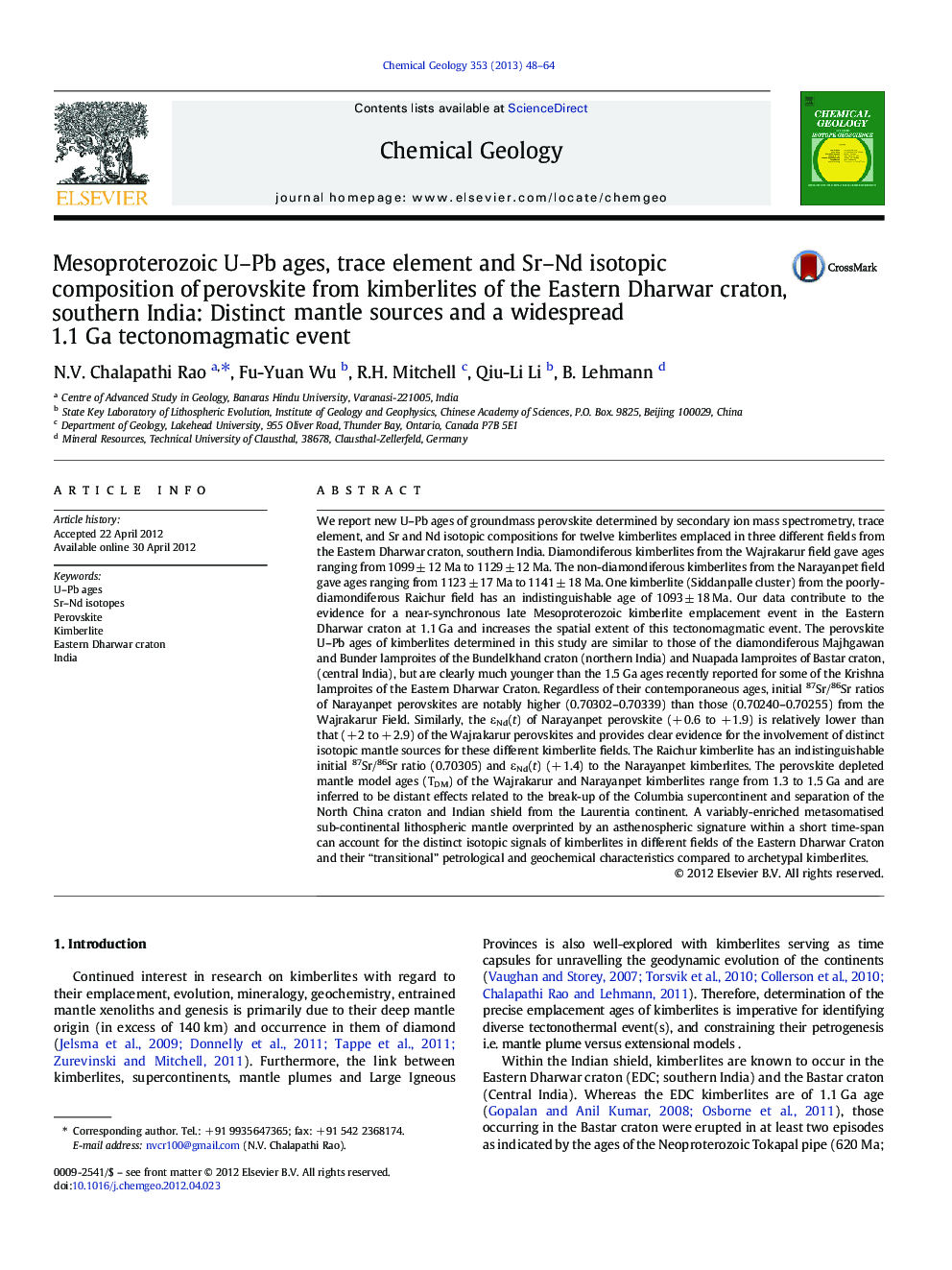| کد مقاله | کد نشریه | سال انتشار | مقاله انگلیسی | نسخه تمام متن |
|---|---|---|---|---|
| 4698930 | 1637616 | 2013 | 17 صفحه PDF | دانلود رایگان |

We report new U–Pb ages of groundmass perovskite determined by secondary ion mass spectrometry, trace element, and Sr and Nd isotopic compositions for twelve kimberlites emplaced in three different fields from the Eastern Dharwar craton, southern India. Diamondiferous kimberlites from the Wajrakarur field gave ages ranging from 1099 ± 12 Ma to 1129 ± 12 Ma. The non-diamondiferous kimberlites from the Narayanpet field gave ages ranging from 1123 ± 17 Ma to 1141 ± 18 Ma. One kimberlite (Siddanpalle cluster) from the poorly-diamondiferous Raichur field has an indistinguishable age of 1093 ± 18 Ma. Our data contribute to the evidence for a near-synchronous late Mesoproterozoic kimberlite emplacement event in the Eastern Dharwar craton at 1.1 Ga and increases the spatial extent of this tectonomagmatic event. The perovskite U–Pb ages of kimberlites determined in this study are similar to those of the diamondiferous Majhgawan and Bunder lamproites of the Bundelkhand craton (northern India) and Nuapada lamproites of Bastar craton, (central India), but are clearly much younger than the 1.5 Ga ages recently reported for some of the Krishna lamproites of the Eastern Dharwar Craton. Regardless of their contemporaneous ages, initial 87Sr/86Sr ratios of Narayanpet perovskites are notably higher (0.70302–0.70339) than those (0.70240–0.70255) from the Wajrakarur Field. Similarly, the εNd(t) of Narayanpet perovskite (+ 0.6 to + 1.9) is relatively lower than that (+ 2 to + 2.9) of the Wajrakarur perovskites and provides clear evidence for the involvement of distinct isotopic mantle sources for these different kimberlite fields. The Raichur kimberlite has an indistinguishable initial 87Sr/86Sr ratio (0.70305) and εNd(t) (+ 1.4) to the Narayanpet kimberlites. The perovskite depleted mantle model ages (TDM) of the Wajrakarur and Narayanpet kimberlites range from 1.3 to 1.5 Ga and are inferred to be distant effects related to the break-up of the Columbia supercontinent and separation of the North China craton and Indian shield from the Laurentia continent. A variably-enriched metasomatised sub-continental lithospheric mantle overprinted by an asthenospheric signature within a short time-span can account for the distinct isotopic signals of kimberlites in different fields of the Eastern Dharwar Craton and their “transitional” petrological and geochemical characteristics compared to archetypal kimberlites.
► New perovskite U–Pb ages for different kimberlite fields in Dharwar craton give ages of 1.1 Ga.
► Their Sr and Nd isotopic contents are distinct and imply contrasting isotopic mantle sources.
► Timing of source enrichment coincides with break-up of Columbia and separation of India and North China.
► Involvement of variably enriched SCLM overprinted by an asthenospheric signature in their genesis.
Journal: Chemical Geology - Volume 353, 30 August 2013, Pages 48–64